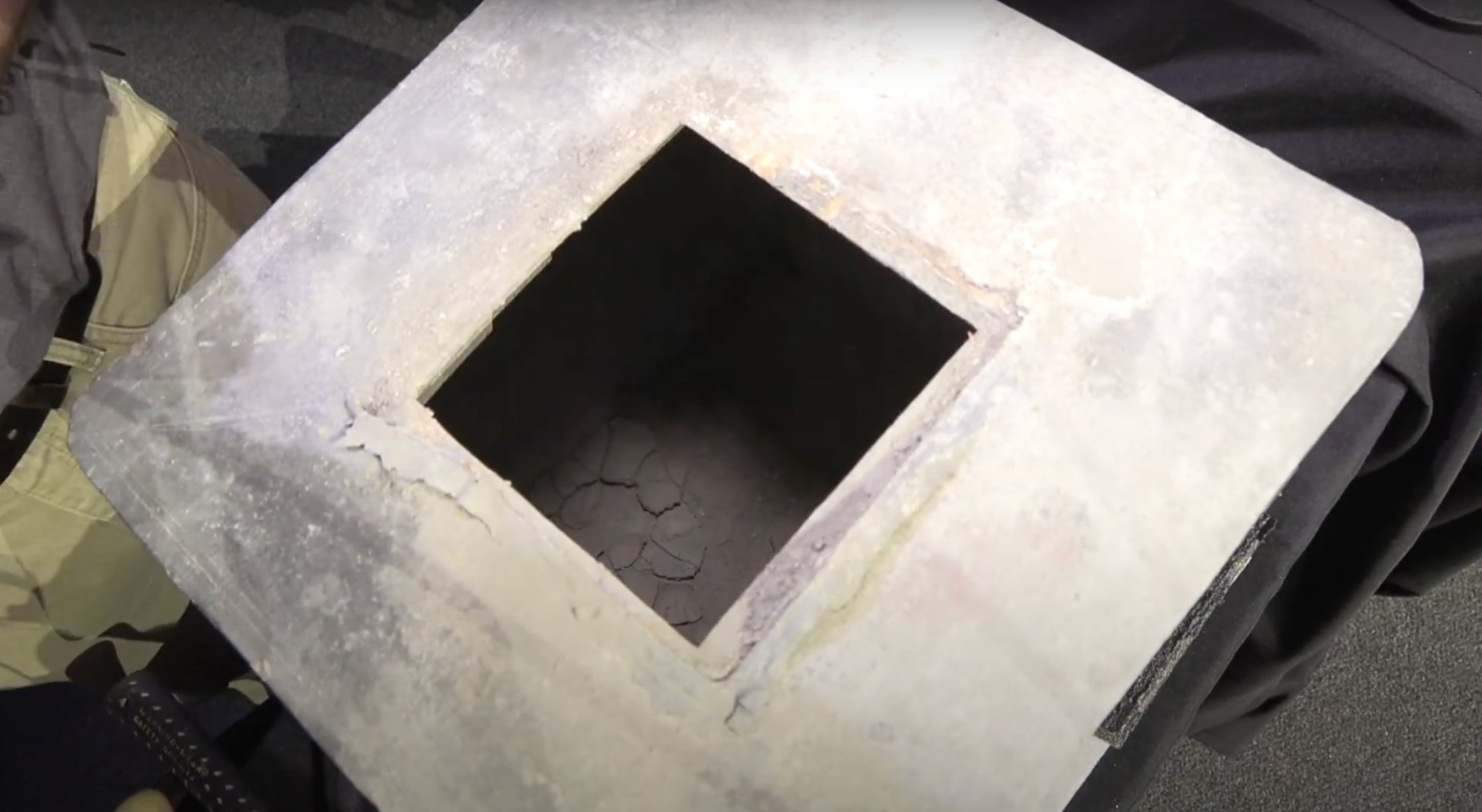The tension Monday in West Point’s Robinson Auditorium could be cut with a knife. A nearly 200-year-old lead time capsule sat center stage in a room brimming with anxious onlookers, its sealed lid slowly prying open as an archaeologist slid a gleaming blade from one side to the other.
A symphony of whispers and nervous laughter reached a crescendo as the surgeon’s tool approached its final cut. Inside the box’s mysterious one square foot of space could be anything — personal tokens of Thaddeus Kosciuszko, under whose monument the capsule was found, antiquated medals or coins, human remains, even a Christmastime leg lamp to proudly display in one’s bay window.
With one last incision, the lid wiggled free. The archaeologist reached for a flashlight, the cube’s dark interior preserving its final moments of secrecy. Top officers, senior historians, libraries, archivists and museum curators leaned forward, the oxygen in the room suddenly in short supply.
“Silt,” the archaeologist said. Just silt.

In what could either be the most dazzling illustration of an anticlimactic “hurry up and wait” gathering or one of the best pranks in military history — perhaps both — the culmination of a centuries-old mystery at the U.S. Military Academy amounted to little more than some dirt.
“The box didn’t quite meet expectations,” the container’s glove- and mask-clad handler said, sheepishly, as the auditorium’s tension swiftly relented to profound awkwardness. “Potentially, it was something small and organic that may have come apart over time, but we’re just not certain.”
The cube, which in recent months became the subject of numerous announcements, an unsealing save-the-date video and a YouTube livestream, was discovered during renovations earlier this year in the base of the campus’ Thaddeus Kosciuszko monument. The shrine stands as an homage to the Polish general and engineer who helped strengthen American defenses during the American Revolutionary War.
X-rays of the box conducted by the institution’s Department of Physics and Nuclear Engineering after its discovery were inconclusive, the academy said, adding to the intrigue of Monday’s sediment-rich unveiling. The lead object is believed to have been placed there in 1828, just 26 years after the academy was founded.
“This time capsule is truly a unique discovery, and we are excited to open it and see what the cadets left us nearly two centuries ago,” U.S. Military Academy Superintendent Lt. Gen. Steve Gilland said ahead of Monday’s deflating unveiling. “The capsule’s contents will certainly add to the West Point story and is another example of past generations of cadets gripping hands with present and future generations.”
Academy staff said they expect to sift through the silt and will research a marking on the underside of the container’s lid in the near future, but for now, it appears as if the container’s contents — and its generational ties — are merely dust in the wind.
J.D. Simkins is the executive editor of Military Times and Defense News, and a Marine Corps veteran of the Iraq War.
Tags:
funny military storiesbest military storieswest point time capsulewest point boxwhat's in the boxIn Other News















